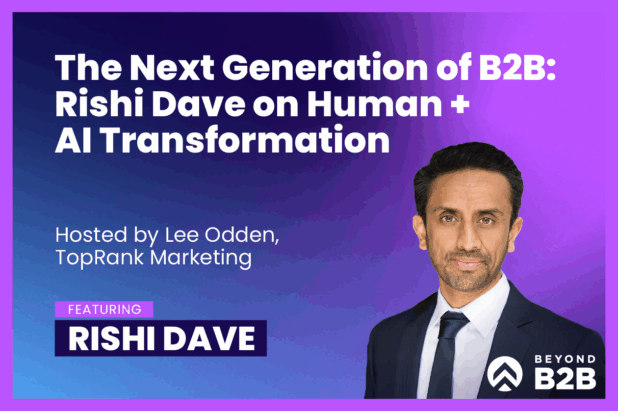 Jackie Huba, blogger at the popular Church of the Customer blog kicked off MIMA Summit 2009 with a moving presentation on the idea of 1%’ers – those influential people creating content on the web (similar to Jakob Nielson’s participation inequality).
Jackie Huba, blogger at the popular Church of the Customer blog kicked off MIMA Summit 2009 with a moving presentation on the idea of 1%’ers – those influential people creating content on the web (similar to Jakob Nielson’s participation inequality).
Through the democratization of publishing content, the vocal minority, those 1%’ers (“sneezers” as Seth Godin calls them or “connectors” as Malcolm Gladwell refers to them as) are integral for your brand.
Why are they important?
New forms of most trusted advertising:
- Recommendations from friends
- Other people’s opinions online
- Company websites
- Editorial content (news articles)
- Brand sponsorships
“1%’ers” fall into both numbers one and two.
What we are seeing is anonymous opinions are influencing the way people buy. Word of mouth from both people we know and don’t know is impacting opinions and purchasing decisions.
The number 1 indicator of growth for any brand: “Would you recommend a product or service to your friends/colleagues.” In other words: loyalty rules.
Levels of loyalty:
- Ownership
- Evangelism
- Referrals
- Retention
- Satisfaction
Examples provided by Jackie:
1%’ers impacting brands negatively:
Domino’s
Negative video about two rogue employees – spread throughout the social web. Domino’s responded by video on YouTube and created a new presence on Twitter. Many viewed the response by Domino’s are laudable, but in some ways inadequate. We’ve all heard the story, but did you hear the impact for the brand:
- 46% would order Domino’s before the prank video.
- 15% would order Domino’s after prank video.
- 24% would order Domino’s after the apology video.
This story spiraled out of control in less than a day and resonated far beyond the local Domino’s where the crisis occurred. The Lesson? Crisis communications now measured in minutes.
Ramon (Domino’s Franchisee)
Another sample from Domino’s, this time a negative situation turned into positive PR.
Ramon, a Domino’s franchisee from Chicago is passionate about social media and pizza. A customer and social media user Amy ordered a pizza from one of Ramon’s locations and they messed up the order. The franchisee created a video response message to “interactive Amy”. Video was authentic and was applauded by both social media devotees and regular users. In the end, the mistake was transformed into something positive.
Motrin
We’ve mentioned this story previously at Online Marketing Blog in a post on B2C marketing, however it remains a great example of understanding your consumers.
Motron launched a video aimed at promoting their product to new moms. Unfortunately, many mother’s felt insulted by Motrin’s message and rallied together against the brand. Instead of responding, Motron retreated from a vocal niche (read the full story at Mashable).
While the negativity may be forgotten by now, Google remembers everything – the story is on page one due to the amount of the attention attracted. And, according to Jackie, you are your Google results.
1%’ers impacting brands positively:
Bacon Salt
A few people in Silicon Valley decided to combine their two favorite things – bacon and salt. They engaged the “1%’ers” in social media channels. Enough people started talking about bacon salt online, that it spread into the real world. There was such demand that people were calling grocery stores asking if they carried Bacon Salt. After enough of this, they had leverage they needed to get their product onto grocery shelves. Their next step was “Baconnaise” – bacon-flavored mayonnaise that was inspired by the amazing response to Bacon Salt.
What can we learn from this? People are the message. We need to connect with real people to spread products and brands. And from research, we know that people are the most trusted form of influence. Additionally, this campaign highlights the fact that social proofing can provide you the reputation necessary to accomplish end business objectives.
Fiskars (best known as a scissors manufacturer)
Fiskars recognized that scrap booking was inherently a social activity. Scissors are, of course, a vital tool for the scrap booking experience.
The brand noted there are gatherings already being held both at stores and with groups that organize online. Fiskars capitalized on this by creating a program not about their products, but about the love of scrap booking. They tapped into the community by finding 4 women who were passionate about scrapbooking and met frequently in a local scrapbooking group.
Fiskars recognized their group as something special and gave them blogs, profiles online and connected them with other scrapbookers around the country. These 4 women were made the leaders of a nation-wide campaign where their local scrapbooking group was patterned at scale. Essentially, scrapbooking lovers nationwide could connect with a digital group of other interested scrapbookers, and then meet up at physical retail locations locally (yet still remain part of a larger group).
People who joined got a “welcome pack” with a unique pair of Fiskars scissors, business cards, etc. Fiskars worked to solidify their brand loyalty by connecting with a vocal group.
Results?
- 6,250 members in 50 states
- 1,000 certified volunteer demonstrators
- Fiskars’ growth rate – craft stores where “Fiskarteers” are involved have three times higher sales growth than non-member stores.
- 13 new product ideas/month
- 85% of “Fiskateers” likely to recommend the product to a friend
The lesson: it’s about getting your customers involved.
Participation is the 5th “P” of marketing.
Conclusion – 3 simple things to leave you with:
- Listen
- Attract, not interrupt
- Participate


